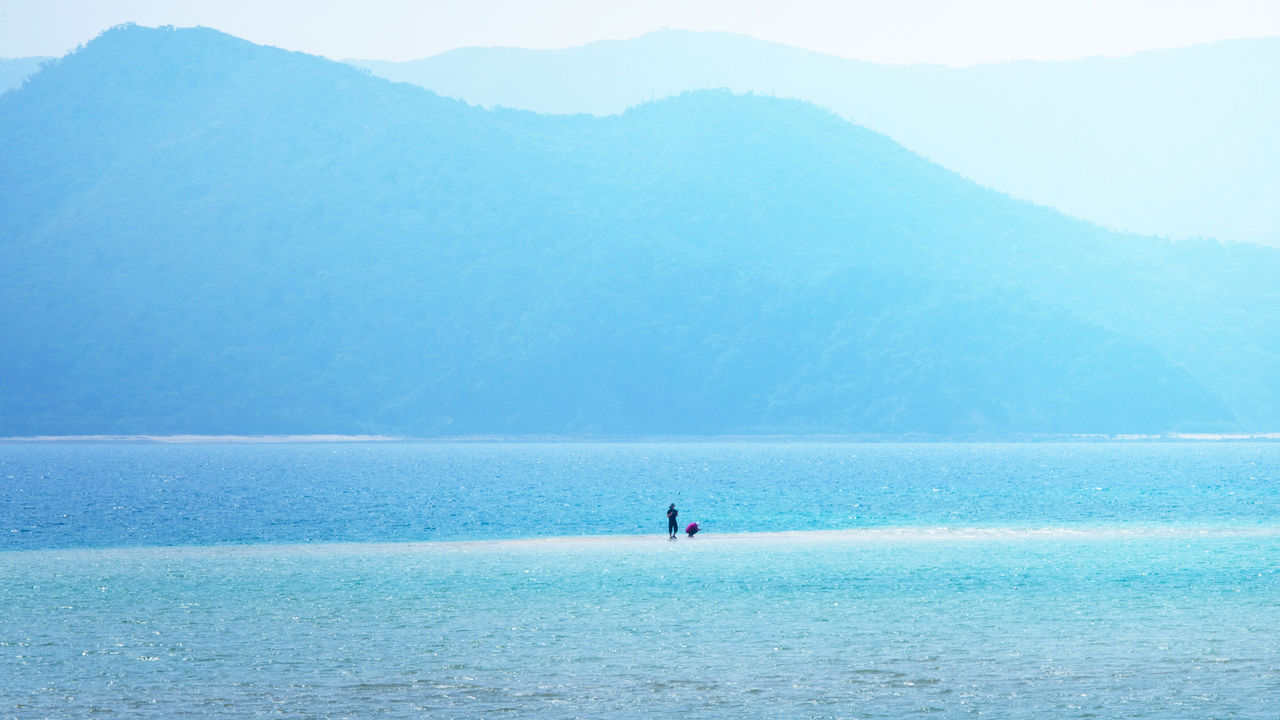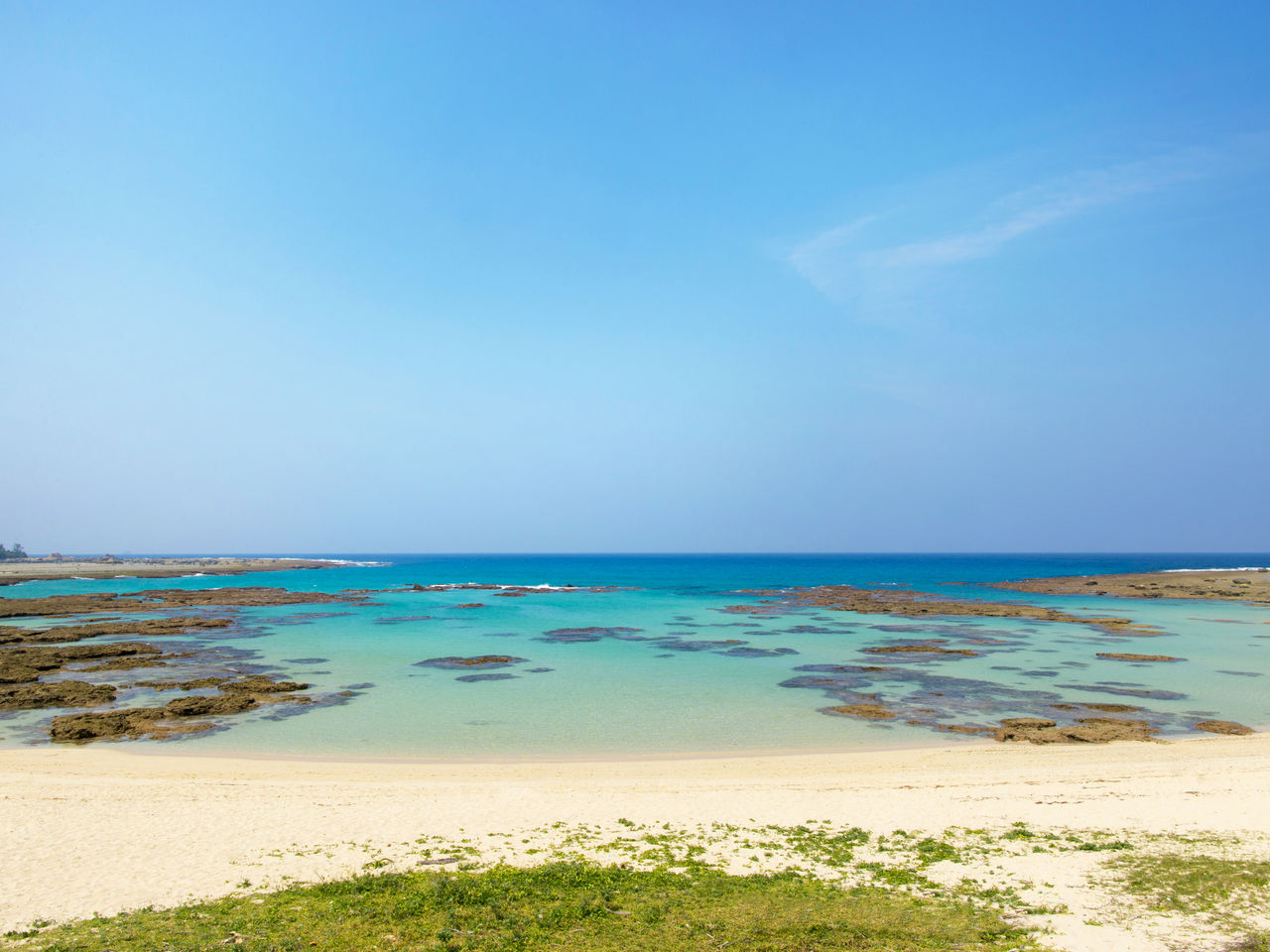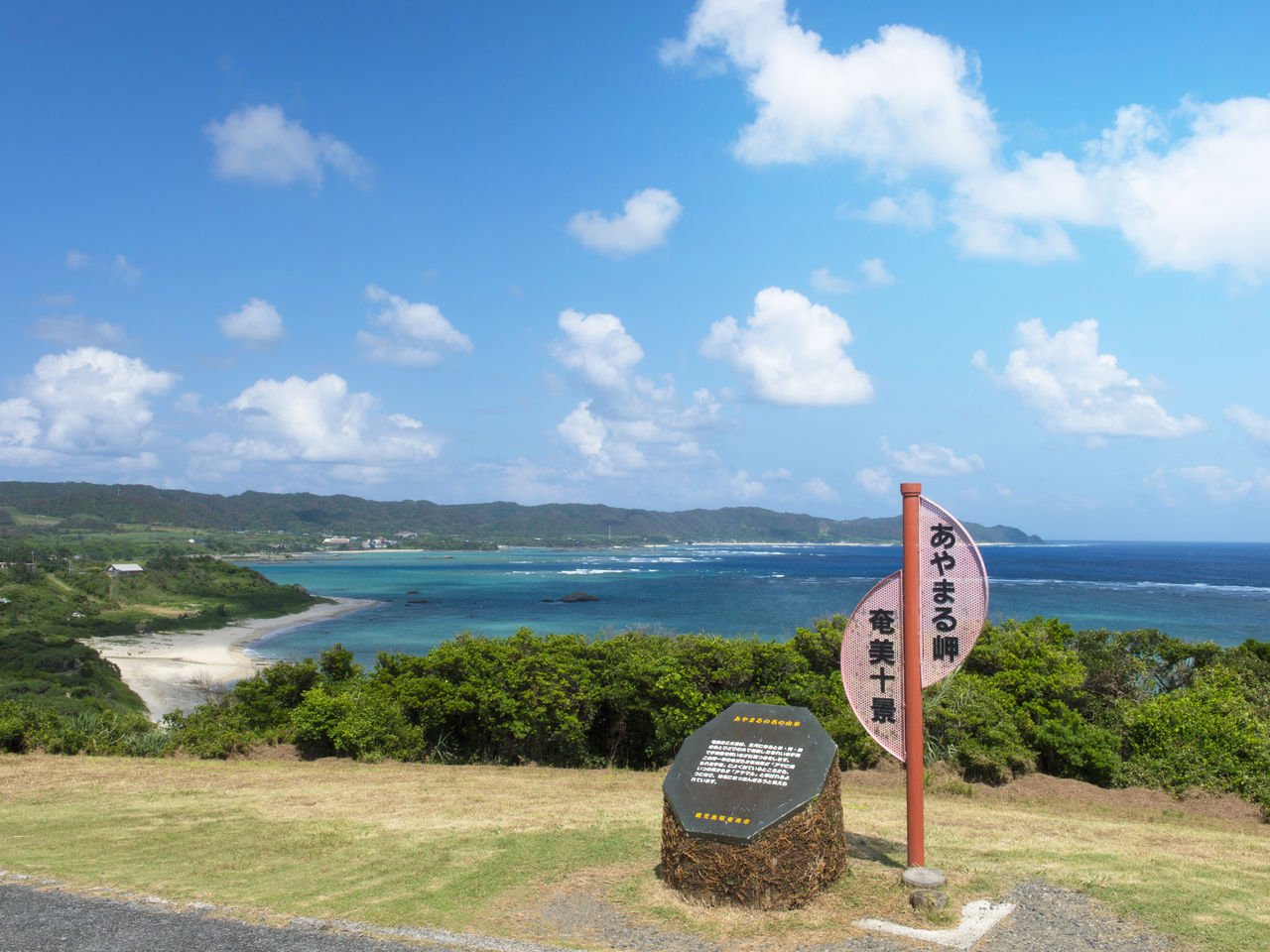
Visiting the Crystal Blue Waters of Amami Ōshima
Guideto Japan
- English
- 日本語
- 简体字
- 繁體字
- Français
- Español
- العربية
- Русский
The Must-See Seashores of Amami Ōshima
Administratively part of Kagoshima Prefecture, Amami Ōshima is located south of Kyūshū and north of Okinawa. It is Japan’s seventh-largest island, after the four main islands, Okinawa’s main island, and Sado. A vigorous natural environment thrives on Amami Ōshima, as does a unique culture, both owing to the island’s isolation from significant landmasses.
In March 2017, Amami Ōshima and its surrounding islands, including Tokunoshima, Okinoerabujima, and Yoron, were designated Amamiguntō National Park. While UNESCO World Heritage Site status had been sought for an area including Amami Ōshima, Tokunoshima, Northern Okinawa, and Iriomotejima, certification for the region was effectively postponed with an advisory issued in May 2018. This past November, however, the Japanese government declared that it would renominate the territory with the goal of receiving certification in 2020 instead.
Amami Ōshima can be reached by combinations of regular commercial airline flights and ferries. In addition, in 2014, the low-cost carrier Vanilla Air commenced direct flights to the island from Narita Airport, and added flights from Kansai Airport in 2017, bringing the island within even easier reach. The first thing that comes to mind when considering the sightseeing attractions of Amami is the beautiful sea all around. Twinkling in a variety of shades of blue, from cobalt to turquoise, these waters are often collectively called “Amamin Blue.”
Our tour of the prime spots to view these waters begins on the northeast of the island, at Amami Airport, our gateway to Amami Ōshima.
Related article › Amami Ōshima: Southern Island of Nature and Culture
Tomori Beach
 Tomori Beach, also known as the “Blue Angel” for its beautiful waters.
Tomori Beach, also known as the “Blue Angel” for its beautiful waters.
First on the agenda is Tomori Beach, a gently shelving beach with shallow waters surrounded by coral, in Kasarichō, just to the north of Amami Airport. Its brilliantly colored waters and breathtaking gradation from the pale sand through countless shades of blue have earned it the nickname “Blue Angel.” Starting from Amami Airport, one tour route commonly taken in this area involves following this beach to Cape Ayamaru and the Kasarizaki lighthouse, on the northernmost parts of the island.
Cape Ayamaru
 Cape Ayamaru, one of Amami’s top vistas.
Cape Ayamaru, one of Amami’s top vistas.
Five minutes’ drive north from Tomori Beach is Cape Ayamaru, ranked among the top scenic spots of Amami. From here, one can see expanding horizons of coral reef and the Pacific alike. The name “Ayamaru” supposedly derives from the rounded, lush geography here, bearing a similarity to an ayaori-no-temari, a handball traditionally wound decoratively with multicolored threads.
 An aerial view of the spectacular Cape Ayamaru reef.
An aerial view of the spectacular Cape Ayamaru reef.
The Lighthouse at Kasarizaki
 The Kasarizaki lighthouse, located at the northernmost point of Amami Ōshima.
The Kasarizaki lighthouse, located at the northernmost point of Amami Ōshima.
At the northernmost point of Amami Ōshima, some 10 kilometers from Cape Ayamaru, stands the cape Kasarizaki, where the white of the island’s northern lighthouse sparkles amid the blue of sky and sea. From the top of the lighthouse, the Pacific Ocean spreads out as far as the eye can see. On clear days, one can also see the island of Kikaijima off to the southeast. The area, known to locals as Cape Yō, is also said to be where the myth of the Ryūgū, the Dragon Palace visited most famously by Urashima Tarō in the classic fairytale, originated.
Kakurehama Beach (Hidden Beach)
 A visit to the Hidden Beach can feel like walking on water.
A visit to the Hidden Beach can feel like walking on water.
Heading southwest brings the traveler to Kasarichō Kise, where Kise no Kakurehama Beach, the Hidden Beach of Kise, appears out in the waters only when the tide is at its lowest. When the waters in the inlet appear more pale than usual, you can walk out far from shore even if you can’t swim. Waves lap at your feet from all directions, making it truly seem like you are walking on the waters of the ocean.
Heart Rock
 This heart-shaped tidepool is a popular destination for lovers.
This heart-shaped tidepool is a popular destination for lovers.
Between Kasarichō and Akaogi, on the outskirts of Tatsugochō, a tidepool called Heart Rock is found. A popular “power spot”—one of many on the island where the natural beauty seems to allow visitors to make a deeper connection with the Earth and themselves—and a perfect place for romance, the area is considered essential for couples to visit. Note that the site is completely underwater at high tide, and is thus best visited at ebb tide.
Ōhama Kaihin Kōen (Ōhama Coastal Park)
 The sunset here is said to be one of Asia’s greatest.
The sunset here is said to be one of Asia’s greatest.
Located 20 minutes’ drive from Naze, the main town on Amami, Ōhama Kaihin Kōen is both a regular tourist site and a place where locals go to relax and unwind. In addition to the requisite blue waters and white sands, the park offers such facilities as Amami Kaiyō Tenjikan (Amami Marine Pavilion), where marine life from nearby waters is cultivated and exhibited, and Thalasso Amami no Ryūgū (Thalasso Amami Dragon Palace), described as a health-and-wellness facility. The area is also known as a nesting site for sea turtles to lay their eggs, as well as for beautiful sunsets over the East China Sea.
Honohoshi Beach
 This beach is covered with smooth, rounded stones polished by the choppy waters.
This beach is covered with smooth, rounded stones polished by the choppy waters.
Located at Setouchichō, on the southern part of Amami Ōshima, Honohoshi Beach has a distinctive appearance. Make your way through the seaside park to get to a beach covered with rounded stones. The rocks, polished to their smooth finish by the choppy waters, clatter as they are rolled around by each incoming wave. The sight of the powerful waves crashing and the sound of the stones combine to make for an unusual beach indeed.
 Some of the adorable rounded stones of Honohoshi Beach.
Some of the adorable rounded stones of Honohoshi Beach.
Yadorihama Beach
 Yadorihama Beach offers a brilliant contrast between white sands and blue waters.
Yadorihama Beach offers a brilliant contrast between white sands and blue waters.
This beach is near the southernmost point of Amami Ōshima. Emerging from the trees lining the shore, you find blue water and white sand spreading out before you, promising a relaxing time. Showers, restrooms, cooking areas, and other facilities are provided, making this a popular campground as well.
Kōchiyama Observation Deck
 The sawtooth coastline of Ōshima strait as seen from Kōchiyama observation deck.
The sawtooth coastline of Ōshima strait as seen from Kōchiyama observation deck.
You won’t want to miss the views of the surrounding oceans from Amami Ōshima’s hilltops. The beauty of Ōshima strait, between Amami Ōshima and Kakeromajima, can be seen from the observation decks on Kōchiyama and Yuidake. As many as 200 species of coral are said to live on these picturesque, sawtooth coastlines.
Nishikomi Sanren Tachigami (Three Guardian Spirits of Nishikomi)
 Sanren Tachigami, three local guardian spirits.
Sanren Tachigami, three local guardian spirits.
The waters are also wondrous to behold at sunset. Nishikomi, located at the westernmost point of Amami Ōshima, sports one of the island’s top evening vistas. The setting sun makes silhouettes of Sanren Tachigami, three islets standing in a row offshore. Other must-see sunsets include those viewable from Yuwandake, the highest point on the island at 694 meters, as well as the observation decks on Kōchiyama and Yuidake, and the aforementioned Ōhama Coastal Park.
 Watching the sunset at Ōhama Kaihin Kōen.
Watching the sunset at Ōhama Kaihin Kōen.
(Originally published in Japanese. Photos and text by Kuroiwa Masakazu.)
Okinawa tourism photography island Kyūshū Kagoshima Amami Ōshima